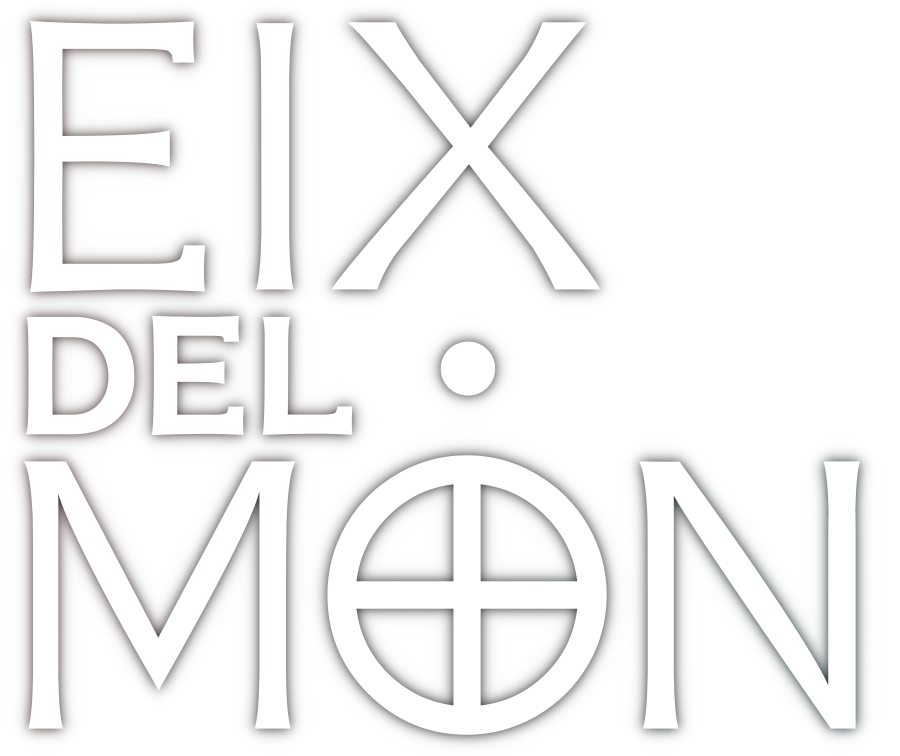Apse of Santa Maria d’Àneu by the Master of Pedret. Painting. End of 11th century – beginning of 12th century. 700 × 410 × 210 cm. Currently at Museu Nacional d’Art de Catalunya. Photo CC BY-SA by Hermes Andreu. Purchased by the Junta de Museus in the 1919-1923 campaign. Inventory number: 015874-000. Decoration of the main apse. From the church of Santa Maria d’Àneu (La Guingueta d’Àneu, Pallars Sobirà). Fresco transferred to canvas.
The original caption from MNAC’s website reads:
The decoration of the apse of Santa Maria d’Àneu, by the Revel, is an example of overlapping themes and motifs from the Old and New Testaments in Catalan Romanesque painting. On the vault is represented the Epiphany, with Mary in Majesty and the Magi. In the lower register can be seen the two seraphim from the vision of Isaiah in the temple of Jerusalem (Isaiah 6: 3-6) singing ‘S(AN)C(TU)S S(AN)C(TU)S S(AN)C(TU)S’ and holding out the tongs with the burning coals to the lips of the prophets Elijah and Isaiah. In the middle, the four wheels of the fiery chariot of Yahweh are an allusion to the vision of Ezekiel (Ezekiel 1:15). It’s also important to note the central role of the three archangels Michael, Gabriel and Raphael, advocates on the Day of Judgement. This original subject matter has its origin in Italian repertories with Byzantine influences.
Also, as per Revelation 4:8:
And the four living creatures, each of them with six wings, are full of eyes all around and within, and day and night they never cease to say, “Holy, holy, holy, is the Lord God Almighty, who was and is and is to come!”
The wings full of eyes are a very interesting subject. As a side note:
Multiocular O (ꙮ) is the most rare and exotic glyph variant of the Cyrillic letter O. This glyph variant can be found in certain manuscripts in the phrase «серафими многоꙮчитїи» (“many-eyed seraphim”). It was documented by Yefim Karsky from a copy of Psalms from around 1429, now found in the collection of the Trinity Lavra of St. Sergius, and subsequently incorporated into Unicode as character U+A66E. Public Domain via Wikipedia.
How “the word of God”, the sounds and images experienced when humans became humans, how the spoken and written languages relate to ancestral celestial catastrophes is well documented (or, as the author says, “heavily speculated”) in:
-
![[PDF]](https://www.eixdelmon.com/wp-content/plugins/papercite/img/pdf.png) H. Crosthwaite, A Fire Not Blown, Metron Publications, 1997.
H. Crosthwaite, A Fire Not Blown, Metron Publications, 1997.
[Bibtex]@Book{crosthwaite-firenotblown, Title = {A Fire Not Blown}, Author = {Hugh Crosthwaite}, Publisher = {Metron Publications}, Year = {1997}, Abstract = {Investigations of Sacral Electrical Roots in Ancient Languages of the Mediterranean Region. With an Introduction by Alfred de Grazia.}, File = {crosthwaite-firenotblown.pdf:crosthwaite-firenotblown.pdf:PDF}, Owner = {trismegisto}, Timestamp = {2016.01.22}, Url = {http://www.grazian-archive.com/quantavolution/QuantaHTML/_start_here.htm} } -
![[PDF]](https://www.eixdelmon.com/wp-content/plugins/papercite/img/pdf.png) H. Crosthwaite, Ka, Metron Publications, 1996.
H. Crosthwaite, Ka, Metron Publications, 1996.
[Bibtex]@Book{crosthwaite-ka, Title = {Ka}, Author = {Hugh Crosthwaite}, Publisher = {Metron Publications}, Year = {1996}, Abstract = {A Handbook of Mythology, Sacred Practices, Electrical Phenomena, and their Linguistic Connections in the Ancient Mediterranean World. Introduction by Alfred de Grazia.}, File = {crosthwaite-ka.pdf:crosthwaite-ka.pdf:PDF}, Owner = {trismegisto}, Timestamp = {2016.01.22}, Url = {http://www.grazian-archive.com/quantavolution/QuantaHTML/_start_here.htm} }





